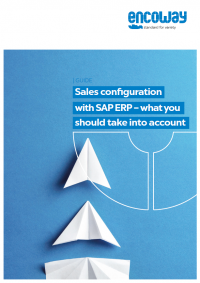How to address the IT skills shortage and relocate your data maintenance to the specialist department
Companies are struggling with limited IT resources. Employees with SAP expertise are among the most sought-after specialists. Most SAP experts in companies are already working at 120% capacity. Finding additional employees with SAP knowledge has become almost impossible. Even established industrial companies are finding it difficult to meet their staffing needs. An easing of the labour market is not expected. In fact, on the contrary: in this age of digitisation, the demand for IT professionals is not expected to diminish, even in economically weaker times.*
At the same time, the supply and demand for customised products and thus the amount of master data and the number configuration models to be maintained are on the increase. When a company only uses SAP for this, data maintenance quickly becomes a real cost driver and a great deal of time is wasted. The adaptation of the product master data and the modelling of the SAP LO-VC models require expertise in SAP variant configuration. Due to scarce resources, they can often not be implemented as quickly as they should be.
How about relocating data maintenance and modelling to the specialist department?
By modelling configuration models and maintaining your product data outside of SAP, you will save valuable resources and therefore money. These activities can thus be carried out independently from one another and this avoids competition for the much sought-after and scarce SAP environment specialists.
Low-level configuration with production parts lists and routings must, of course, remain in SAP. However, the high-level configuration used to create sales parts lists for use in price indications and quotations can be carried out perfectly well in an external CPQ system. A system of this type will include an intuitive data maintenance environment such as encoway CPQ Studio, which enables product management, marketing and internal sales staff to create and modify all sales configuration rules in a simple and straightforward way.
In addition, sales product information and images can be stored directly or integrated via a PIM system. Instead of waiting for the SAP experts, the various departments are now able to implement sales configurators themselves. At the end of the configuration, the evaluated characteristics are transferred to SAP ERP, where the low-level configuration – generation of the bills of material and routings for production – takes place.
Amendments to your portfolio can thus be implemented much more quickly, with a positive effect on the time-to-market of your products and solutions. Also, translations can be created directly in the data maintenance environment. Now, nothing stands in the way of consistent and multilingual product communication.
* Study by the Institute for Employment Research (IAB)

Strategic Marketing, encoway GmbH
LinkedIn







